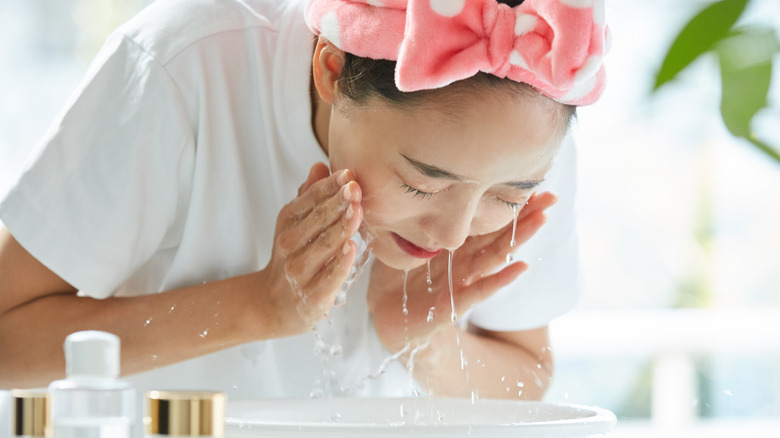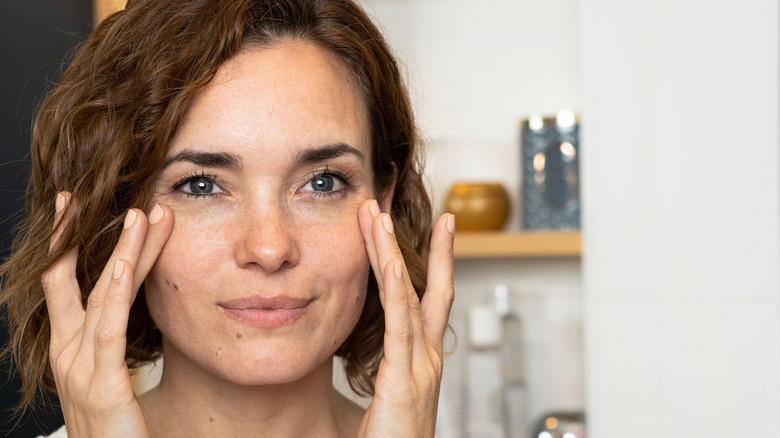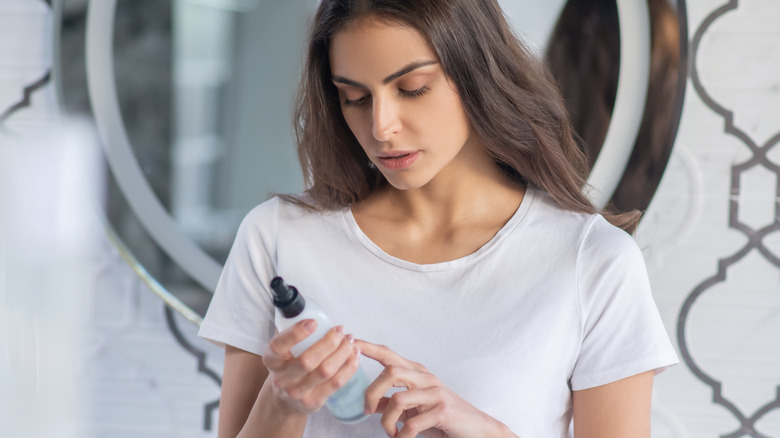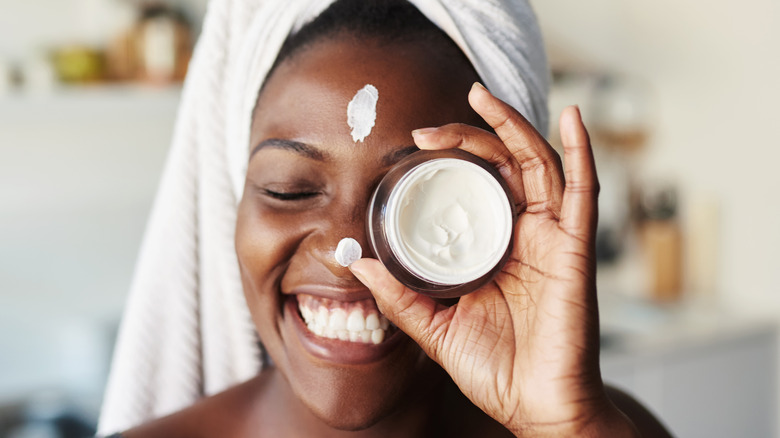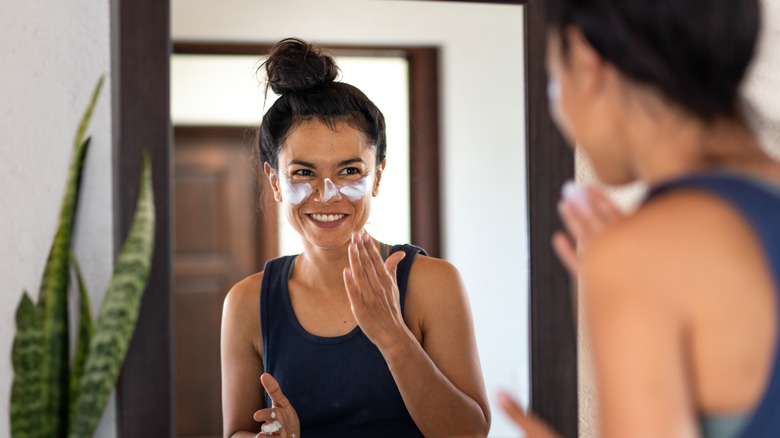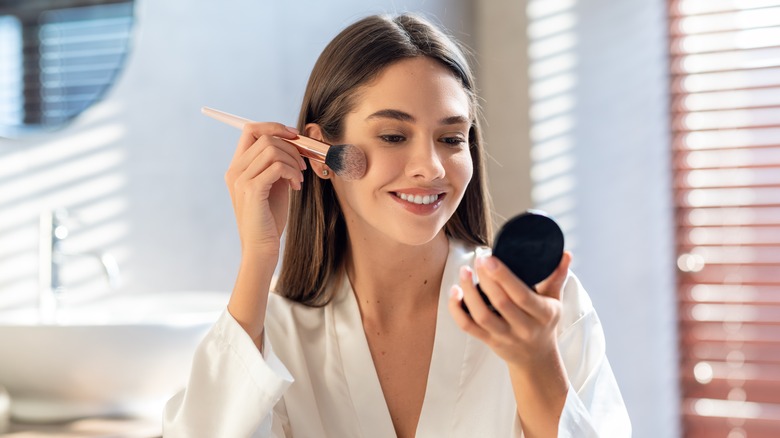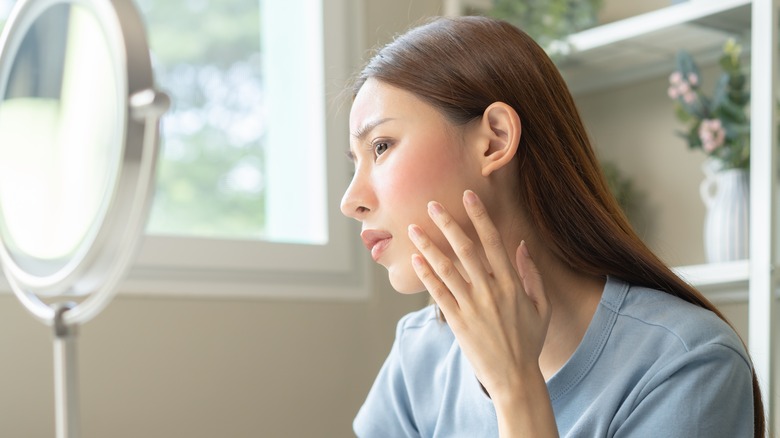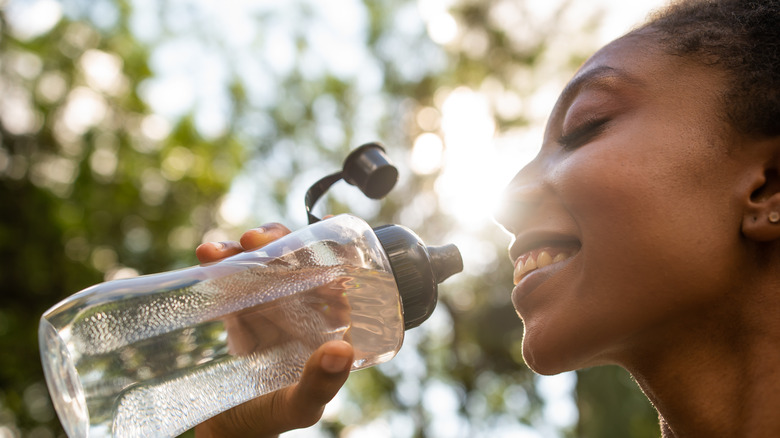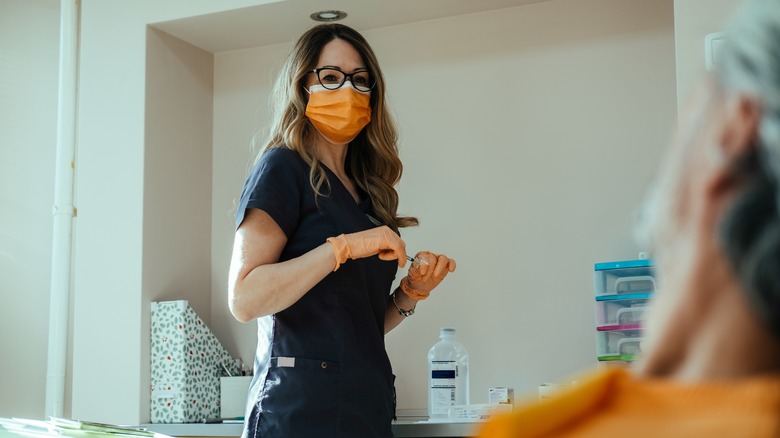Avoid Summer Breakouts With Our Best Acne-Fighting Solutions
Summer finally arrives, and you get to pull out your sundresses, bikinis, and flip-flops. Are you also pulling out those acne products you stuffed into the back of your beauty cabinet? If you're seeing summer breakouts, take a breath. Whether your current acne has increased or you have brand new acne, there are ways to deal with it so you can show off your skin this summer.
An uptick in acne once summer hits is a super common skin condition that is most likely the result of pores becoming clogged due to a change in temps and humidity, possibly a little (or a lot) of extra sweat, contact with chlorine and saltwater, and all of that outdoor activity and fun. Add to those things the layers and layers of sunscreen you are hopefully applying to your skin, and you have the perfect storm for acne.
While the warm weather months may be the last time of year you want to see blemishes, there are ways to get rid of breakouts with the best acne-fighting solutions for summer. Most likely, all you need to do is swap out a few products, take a second look at your typical skincare usage, and make a few other simple tweaks. We have tips on beating summer acne so you can spend more time thinking about having fun in the sun and not your skin.
Switch up the way you cleanse your skin
For some people, cream and oil cleansers can be too much in the heat and humidity of summer, even for those with a dry skin type. If you can relate, try switching them out for a foaming gel or milk cleanser to clean away dirt, residue, and excess oils without over-moisturizing the skin or using something too emollient. Your skin can also benefit from using a toner to thoroughly remove all residue your cleanser might leave behind. Toners are also a great way to remove oil, grime, and sweat between cleansing.
Pollution is also a factor when it comes to acne, according to research published in BMC Public Health journal, so keeping skin clean helps to rid the skin of pollution from the day and banish acne. Then there's chlorine, saltwater, and sweat ... all of those need to be washed off, too, so be sure to cleanse your skin after swimming, working out, or spending time in the sun to help quell breakouts.
A cleanser designed for acne might also be helpful. Look for ingredients like salicylic acid when choosing a cleanser, and be sure to keep skin clean and clear by washing twice daily — but no more than that, as overwashing may have the opposite effect and create even more oils, thus, more acne (via Healthline).
Exfoliate the right way
Yes, exfoliation is a key skincare step for clear skin. But it's essential to get this step right to avoid exacerbating your acne. First, check the exfoliating product you have on hand. Some granular exfoliants contain oils that help the product glide across the skin and leave behind a silky smooth feel. But those oils can also be a culprit when it comes to clogging pores.
When choosing an exfoliant for acne-prone skin, opt for those that have a gel consistency, as they are less likely to clog pores or increase oiliness. Exfoliants made with natural acids, like glycolic acid and lactic acid, can be great for removing dead skin cells, debris, and built-up sebum from the skin's surface without causing a feeling of irritation or clogged pores.
If you prefer a physical exfoliant — the type that contains little grain-like particles — be sure to use one that is designed for acne-prone skin types. Shoot for twice weekly use of your exfoliant, and (this is super important!) never exfoliate if your skin is irritated or has open sores.
Make sure your skincare is non-comedogenic
You've seen this term on skincare and beauty product labels, but what does "non-comedogenic" truly mean, and how does it affect acne? Products that are designed to be non-comedogenic means they won't clog pores which can lead to breakouts.
Occlusive ingredients are those that form a barrier on the skin. This can be beneficial in trapping moisture in the skin during dry winter months. But that barrier can create a breeding ground for pimples and might be an issue when used on acne-prone skin, especially in the summertime. Silicones, petrolatum, lanolin, mineral oil, and some natural butters and waxes — like beeswax and cocoa butter —are occlusive ingredients used in skincare products.
Most often, skincare made without these ingredients that are also designed to be non-comedogenic will display the term on the product label. While it seems like a no-brainer to steer clear of thicker, heavier products in the summer, silicone ingredients show up in many products to make the skin feel extra smooth. One to watch for is dimethicone. If you are using a moisturizer, sunscreen, or other product type that contains dimethicone, try stopping usage and see if there is an improvement in your breakouts.
Your skin still needs moisture
All of that talk about pore-clogging ingredients may make you tempted to skip the moisturizer, especially if you are experiencing an increase in acne. But did you know that keeping your skin properly hydrated is an essential step when it comes to keeping breakouts in check? Here's why. When skin doesn't receive enough moisture, the top layer of skin becomes dry and flaky. And, yes, this includes oily skin types.
The skin also begins to naturally produce more oil in order to "compensate" for the dryness, according to dermatologist Amy Weschler (via WebMD). This excess oil then becomes trapped under the top layer of dry, flaky skin, causing clogged pores and breakouts. The best route to take when moisturizing your skin during summer breakouts is with a lightweight, non-comedogenic moisturizer.
One designed for acne-prone skin will most likely benefit you. If you have breakouts with sensitive skin, opt for one that is free from salicylic acid or benzoyl peroxide to keep from irritating your skin. Be on the lookout for lightweight hydrating ingredients, like aloe vera, hyaluronic acid, and glycerin, and be sure to moisturize every time you cleanse your skin.
Protect from the elements
Of course, spending time outdoors is one of the best parts of the warmer weather months. But did you know UV rays can cause more skin-related issues than just sun damage? That's right — too much sun exposure to your skin can also lead to an increase in acne, according to research published in Frontiers in Public Health. This is because UV rays dry out the skin, which we know can lead to breakouts.
Since it's pretty much impossible to avoid the sun in the summer (and, honestly, who would want to?), what's the answer? It all comes down to regular and thorough sunscreen usage. It doesn't matter whether you plan to spend the day at the beach or are just traveling to and from work; it's essential to apply a daily sun protectant. Choose the correct SPF for your needs and a sunscreen suited to your skin type. A facial moisturizer with SPF makes this effortless.
As for reapplying, the general rule is to reapply your sunscreen every two hours when outdoors or after swimming or sweating. If you are spending the day indoors, reapply if you plan to go back out into the sun or more often if you sit near a window. And, even though it's super tempting to get a bit of glow going for summer, tanning beds count when it comes to UV damage, so it's best to avoid them if you are battling acne.
Use oil-free makeup for summer
Skincare tends to be the main focus when it comes to zeroing in on what's causing your acne. But the makeup you use can be problematic with breakouts too. That oil-based foundation and concealer that gives you a dreamy, creamy finish? The oil-based bronzer and blush you love for a glimmering, radiant look? Those might need to be put on hold if you are dealing with summer breakouts on your skin.
Why? Because overly emollient oil makeup ingredients might work when your skin is on the dry side, but they can cause more oil production when the weather is hot, humid, and sticky, resulting in acne. You can find all types of makeup products, including foundation, concealer, bronzer, and blush, in powder formulas.
These not only cut down on the oils you apply to your skin, but they help to absorb the excess oil your skin produces in the summer months. If you aren't a big fan of powder makeup products, no sweat. There are many makeup options made for oily skin that are not oil-based and won't clog your pores. Look for the term "oil-free" on makeup product labels.
Keep hands and other items off of your face
Another effective tactic that is pretty much essential when it comes to managing summer blemishes is the no-touch rule. This is a good idea any time of year, really, but is extra important in the summer for those who are even more prone to breakouts during the warmer months. The no-touch rule applies to hands, phones, and any other object your skin might come into contact with. When you touch your face, dirt and bacteria can transfer to your skin, which can then cause a pimple.
Wondering if this is the case with your acne? Take a look at where your breakouts are most common. If they tend to show up on your cheeks and temples, your phone or pillowcase could be the culprit. Be sure to clean your phone daily with an antibacterial wipe (or more often if necessary), keep it away from your face, and switch out to a clean pillowcase regularly.
Zits on your forehead? That cute hat or visor could be trapping sweat and causing pimples. They can also cause friction against the skin, which can lead to blemishes. Be sure to keep your headgear clean and let your skin get some air. Try tying your hair up instead, seeking shade when possible, and don't forget the sunscreen.
Don't overlook your hair
Blemishes around the hairline, cheeks, and neck can be caused by your hair. Yep, dirty or greasy hair, or wetness when your hair gets sweaty, can cause breakouts when it touches the skin. But even if your hair is clean, it might still result in breakouts. Hair conditioners, leave-ins, serums, and styling products made with silicones or oil ingredients can transfer to the skin and clog your pores.
So, what to do? Try keeping your hair clean and, if possible, off of your face when addressing summer acne. Those bangs you so stylishly sported through fall, winter, and spring may need to go for summertime if you are dealing with acne on your forehead. If you don't want to grow them out completely, try pinning them to the side until your summer acne subsides.
You might need to increase how often you shampoo your hair during the hot weather months, and it can also be beneficial to switch to a silicone-free hair conditioner, as well as hair styling products. Buy some chic silk scarves, hair ties, and clips to make pulling your hair back stylish and effortless. This will not only add to your look but will help to keep your skin clear too.
What's good for the face, is good for the body
Summertime breakouts aren't only a problem for the face. It's common for pimples to increase on the chest and back this time of year, as well. Some of the basics for dealing with body acne in the summer are the same as the way you treat pimples on your face: Keep your skin clean, cleanse after sweating or swimming, and use oil-free products and daily UV protection.
But there are also a few more tips that can come in handy when it comes to body acne. Wearing loose, breathable fabrics will help to keep skin sweat-free and won't cause friction, which can increase your risk of breakouts and exacerbate existing acne. Be sure to exfoliate your chest, back, and any other areas where you see acne when you shower.
A granular exfoliant is typically the best and easiest to use on the body. As with the face, be sure it doesn't contain oils as one of the main ingredients to keep pimples at bay. You can also start taking a before-bed shower and switch to body cleansers and lotions made for acne-prone skin.
Don't pick your blemishes
You've heard it before, but we'll say it again: Try your best not to pick or pop blemishes if at all possible. Not only will manipulating the blemish make the mark look red and may cause bleeding, but popping a pimple can force debris and bacteria into the deeper layers of skin, resulting in further swelling and, possibly, an even larger, longer-lasting zit.
Plus, popping and picking can lead to scarring, and the summer sun can make scarring look even darker and more difficult to eradicate. If you have an especially large pimple, resist the urge to touch it and try applying a drying spot treatment solution instead. These pimple treatments are more concentrated and contain salicylic acid along with ingredients to soothe the skin and reduce the appearance of redness, helping to shrink blemishes quickly.
Use every night as directed. Of course, keeping the skin clean is essential to making that zit go away faster, and feel free to ice the spot if it is red and inflamed to help ease the swelling. And you know the saying — time heals all wounds. Even pimples.
Drink up (water, that is)
Keeping your skin sufficiently hydrated from the outside isn't the only way to ward off dryness that can lead to breakouts. It's an absolute must to hydrate from the inside too. Staying hydrated helps your skin stay healthy and balanced, and balanced skin is clear skin. Drinking plenty of water is also detoxifying to the body, helping to rid it of toxins that can show up on the skin.
There are many reasons to start your day with a glass of water before you have your coffee. But how much water should you be drinking in the summer? Even if you think you are a sufficient water-guzzler, you might not be getting enough if you spend a lot of time outdoors in the summertime.
The University of Iowa Hospitals & Clinics recommends hydrating before — even 24 hours prior — to heading outside, as well as while you are out in the heat. If you are exerting energy while out in hot temps, the CDC recommends consuming 8 ounces of water at least every 20 minutes. Time to buy a water bottle!
When to go see a professional
Being consistent with the best acne-fighting solutions is important when treating breakouts. If you've used summer breakout tactics — swapping out your skincare for a regular acne-focused routine, keeping hands and other objects off of your skin, wearing daily sun protection, and drinking plenty of water — for a few weeks with little to no improvement, it might be time to see a professional.
Your doctor or dermatologist can decide which options will better address your skin issues, and they can provide medications and treatments that you won't be able to find over the counter.
There are a few other reasons to see a dermatologist for your summer breakouts. If your acne covers large areas of your skin, if you have deep and painful pimples, or if you feel you may have an infection, it is a good idea to check in with your physician for help in finding the solution to your summer acne.

